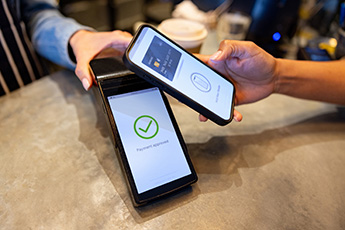Many people have been busy with DIY projects, as they spend more time at home -- painting walls, putting up a backsplash, transforming a backyard living space, etc. To make it easier and safer, many DIYers have been using mobile credit card apps during the pandemic. But, they are not the only ones.
Even before COVID-19, according to a PYMNTS and Elan payments report in December 2019, 102MM consumers (40.5%) had downloaded a mobile card app. These days, with physical distancing and just now loosening stay-at-home orders, along with fears of cash as a coronavirus contaminant, mobile card acceptance has certainly increased among a wider portion of the population.
According to a recent report provided by Research and Markets, almost a third of US consumers were first-time users of contactless payments during the coronavirus, with the majority expecting to continue usage after the crisis. The same report forecasts an 8x increase in US contactless card payments from 2020 to 2024.
In the wake of the global pandemic, mobile card apps and contactless payment options have become so important to people that 31.4% of customers at local or regional banks would be willing to switch banks if there was another institution that provided better card apps and services, according to a new report from PYMTS and Ondot. While this is not a new trend, the current environment has definitely made mobile app usage more comfortable for them. Reasons that local and regional bank customers mentioned for possibly switching financial institutions include: easier card account management (62.6%); more control (57.2%); faster access to information (55.3%); better fraud protection (37.7%); and better data security (36.2%). These may be areas to consider beefing up when you review your institution's own app features.
Also, as smartphone technology continues to advance, so do the expectations for mobile card apps. Today, smartphone features such as authentication, notifications, and location finder are expected in mobile card apps as well. While 90.3% of national banks provide mobile app users with the ability to choose their preferences for such services, only 82.3% of local and regional banks have apps with similar capacities.
Small businesses are still struggling. But, as they reopen or pivot to another venture down the line, many will be using mobile card apps to access funds, provide them with spending insights, and more. Knowing that the importance of these apps has grown will allow you to better support your customers as they make their way through recovery.




